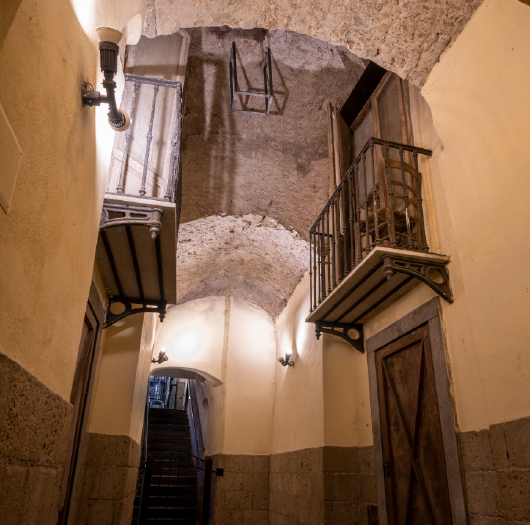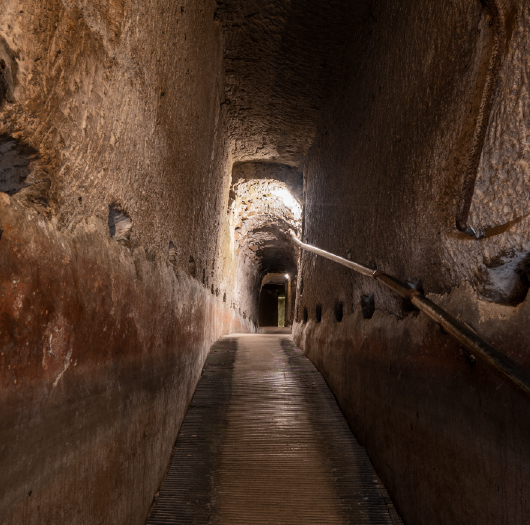


- – Greek-Roman Theater
- – War Museum
- – Co.R.E. Gallery
- – Tufello wine
- – Hypogeum Gardens
Taking this journey through time is possible thanks to the ancient origins of the subsoil of Naples which can be placed in prehistoric times.
This particular substrate has therefore gone through various historical periods, such as the one that began in the third century BC, where the Greeks opened the first underground quarries to obtain the tuff blocks necessary to build the walls and temples of their Neapolis.
In Roman times, the impressive development of the underground network began: the Romans in the Augustan era endowed the city with road tunnels and a network of complex aqueducts, fed by underground conduits coming from the sources of the Serino, 70 km away from the center of Naples.
Other branches of the aqueduct from the Augustan age reached Miseno, to feed the Piscina mirabilis, which was the water reserve of the Roman fleet.
Wide only enough to let a man pass through, the tunnels of the aqueduct branched off in all directions, with the aim of feeding fountains and houses located in different areas of the upper city.
On the walls, you can still see traces of the hydraulic plaster, used by ancient engineers to waterproof the tunnels.
In the 16th century, the old aqueduct and the many rainwater cisterns were no longer able to satisfy the need for water of the city, that had spread like wildfire and this is the reason the wealthy Neapolitan nobleman Cesare Carmignano built a new aqueduct.
It was only at the beginning of the twentieth century that the city stopped digging underground for water supplies and a network of tunnels and terns spread throughout the city of over 2,000,000 square meters was abandoned.
The basements were then used during the Second World War as air-raid shelters to protect people from the disastrous bombings that hit the city: the cavities were illuminated and arranged to accommodate dozens and dozens of people who, at the sound of the siren, hurried down the stairs..
Remains of furniture, graffiti and various objects in excellent condition still testify today to the great fear of bombing and the several moments of the day lived in the shelters, bringing to the surface an important but at the same time tragic period in the history of the city.






